Author Archive
Thursday, July 16th, 2009
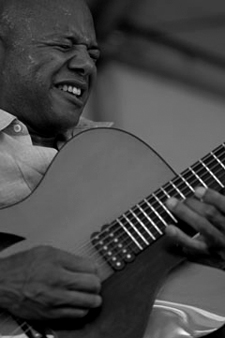 Mark Whitfield was born in October 1966 in Long Island, New York. The youngest of five, his love for jazz and blues music came early. At the age of 15, all his siblings were moving into careers as doctors and lawyers and Whitfield himself, had obtained a medical student internship at Georgetown University. While that’s impressive for any 15-year-old, it was the scholarship he won to the Berklee College of Music, in Boston, which excited him even more. After his family moved across the country to a suburb of Seattle, Whitfield convinced his parents to let him attend Berklee after graduating from high school early, at the age of 16. It was while studying the guitar at Berklee where Whitfield met a young piano and vocal student from Baton Rouge, Louisiana, named Jody Davis. Mark Whitfield was born in October 1966 in Long Island, New York. The youngest of five, his love for jazz and blues music came early. At the age of 15, all his siblings were moving into careers as doctors and lawyers and Whitfield himself, had obtained a medical student internship at Georgetown University. While that’s impressive for any 15-year-old, it was the scholarship he won to the Berklee College of Music, in Boston, which excited him even more. After his family moved across the country to a suburb of Seattle, Whitfield convinced his parents to let him attend Berklee after graduating from high school early, at the age of 16. It was while studying the guitar at Berklee where Whitfield met a young piano and vocal student from Baton Rouge, Louisiana, named Jody Davis.
Whitfield’s tenure at Berklee was not as smooth as his acceptance to the school had been. He wanted to play traditional mainstream jazz, which was not in vogue at Berklee at the time. “I was looking for pure sound, a hollow-body guitar, a small amplifier, no effects,” he told Offbeat. He found a core of jazz purists that he could jam with, which included Delfeayo, Wynton, and Branford Marsalis.
At the age of 20, Whitfield graduated, married Jody, and the couple moved to a small studio apartment in Brooklyn, New York. Whitfield’s sister was a stockbroker and got him a position as a stockbroker’s assistant. More importantly, his brother-in-law, drummer Tory Davis, got him a job playing with the after-hours house band at the famous Blue Note jazz club in Greenwich Village.
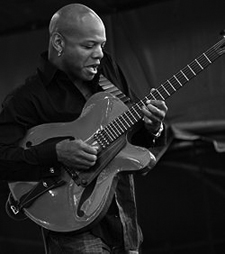 Later that same year, he was playing at the club’s 25th anniversary party when legendary jazz guitarist George Benson heard him. Benson was impressed and arranged for him to work with celebrated organist Jack McDuff. McDuff was not especially enamored of Berklee graduates but let him play with his band. It was a learning experience for Whitfield who incorrectly assumed he had a sophisticated theoretical and harmonic background. McDuff soon set him straight, “Stop playing those banjo chords,” he told Whitfield. Later that same year, he was playing at the club’s 25th anniversary party when legendary jazz guitarist George Benson heard him. Benson was impressed and arranged for him to work with celebrated organist Jack McDuff. McDuff was not especially enamored of Berklee graduates but let him play with his band. It was a learning experience for Whitfield who incorrectly assumed he had a sophisticated theoretical and harmonic background. McDuff soon set him straight, “Stop playing those banjo chords,” he told Whitfield.
In 1990, around the time his debut album came out, Whitfield and Jody discovered they would soon be parents. They decided to move to Jody’s home town of Baton Rouge, to raise their child in a more traditional family setting. There, Whitfield met saxophonist Alvin Batiste, head of Southern University’s jazz program, who soon became his mentor. He began playing with his old classmate, Delfeayo Marsalis, and through him met other members of the New Orleans jazz community, including trumpeter Nicholas Payton. Since then, the two have played on each other’s albums and as backing musicians for famed organist Jimmy Smith.
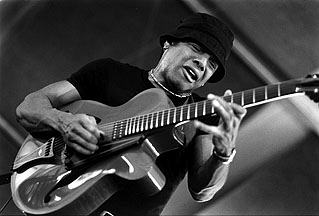 Whitfield’s second album, Patrice, was released in 1991. More avant garde than his previous album, it again did well with the critics but not in sales. In 1993, while working on his third album he had been persuaded to try a more salable approach and the smooth jazz of his Kenny G-style work produced a modest success. Whitfield toured with a large band for a few months but found he disliked playing pop songs. He returned to playing more traditional jazz with a trio and in turn confounded the audiences, who were expecting his pop material. “The alternative is, you sell out your musical and artistic vision,” he told Keith Spera of Offbeat. “If it’s not a huge commercial success, then you’re a complete failure–you have no recourse. You weren’t successful as a jazz musician, you weren’t successful as a pop musician. What do you do now?” Whitfield’s second album, Patrice, was released in 1991. More avant garde than his previous album, it again did well with the critics but not in sales. In 1993, while working on his third album he had been persuaded to try a more salable approach and the smooth jazz of his Kenny G-style work produced a modest success. Whitfield toured with a large band for a few months but found he disliked playing pop songs. He returned to playing more traditional jazz with a trio and in turn confounded the audiences, who were expecting his pop material. “The alternative is, you sell out your musical and artistic vision,” he told Keith Spera of Offbeat. “If it’s not a huge commercial success, then you’re a complete failure–you have no recourse. You weren’t successful as a jazz musician, you weren’t successful as a pop musician. What do you do now?”
In 1994, Whitfield moved to the Verve record label and returned to his jazz and blues interests with True Blue, an album that featured seven original compositions and six jazz classics. The combination garnered both critical praise and impressive sales. “The maturation process of this standout jazz guitarist continues unabated,” wrote Bob McCullough in the Boston Globe. It was followed by 7th Ave. His new life in Louisiana had helped move his playing beyond the styles he learned in Boston and New York. Stroll readily calls to mind the eastern urban ambiance of his beginnings at the Blue Note.
Posted in Artist of the Month | 3 Comments »
Monday, July 13th, 2009
WNCU 90.7 FM announced today a special broadcast to discuss the H1N1Virus and its impact on the Triangle and North Carolina. Human cases of H1N1 influenza have been identified in North Carolina, the United States and several other countries. Researchers are working to develop effective treatment and a vaccine that will curb the spread of the flu.
On July 28, at 5:00 p.m. WNCU 90.7 FM will broadcast a one hour special on the H1N1Virus to give listeners an opportunity to hear from local professionals for an update on the virus. Among the invited guests will be state health director Dr. Jeffery Engel, Dr. Letitia Hazel medical director of student health and counseling services at North Carolina Central University, Durham County Emergency Preparedness Coordinator Beatrice Jackson and Dr. James Thomas Associate Professor of Epidemiology and Director of the Program in Public Health Ethics at the University of North Carolina at Chapel Hill. The discussion about H1N1 will be listener driven. If you have a question about the virus that you would like the guests to answer call the WNCU studios and leave at message after 5:00 p.m. weekdays at 919-530-7445. If you are a friend of WNCU on Facebook, you may submit your questions on our page.
For additional information, call the WNCU 90.7 FM newsroom at 919 530-7833.
Posted in Public Affairs | 5 Comments »
Wednesday, July 1st, 2009
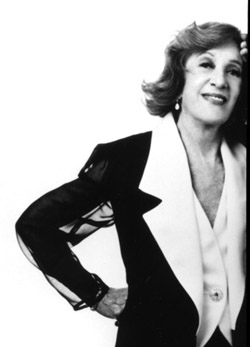 WNCU will air Piano Jazz weekly beginning Sunday, July 12th at 6pm. WNCU will air Piano Jazz weekly beginning Sunday, July 12th at 6pm.
Since April 1979, legendary pianist Marian McPartland has welcomed a stellar line-up of jazz artists for one hour of conversation and improvisation on her Peabody Award-winning program. Each week, McPartland, with her engaging personality and improvisational savvy, hosts a variety of performers in her radio living room.
Piano Jazz is a forum for jazz legends and influential performers as well as up-and-coming talents. Oscar Peterson, Herbie Hancock, Dave Brubeck, Diana Krall, Max Roach, Cassandra Wilson and Tony Bennett are among the over 500 guests who have joined McPartland to create dynamic duets and discuss their lives and music.
A production of South Carolina Educational Radio and distributed nationally by NPR, Piano Jazz is the longest-running national performance program on public radio and was called “an oasis of intelligence and grace and probably the best hour of jazz on the airwaves” by The Washington Post.
In 2000, McPartland was named an NEA American Jazz Master and received the ASCAP Lifetime Achievement Award and the Mary Lou Williams Women in Jazz Award for her contributions to jazz.
Posted in Music News | 5 Comments »
Tuesday, June 16th, 2009
 November 11, 1923 – June 16, 2009 November 11, 1923 – June 16, 2009
Charlie Mariano died peacefully in his sleep this morning, June 16, 2009.
He had been in a hospital again in February, and he could no longer burden the stress of the medical treatment.
He spent his last days at the Mildred Scheel Hospiz in Cologne, Germany, accompanied by his wife Dorothée and two of his daughters, Cynthia and Zana.
The cremation will occur tomorrow and his ashes will be sent to Boston, where he will be entombed at the family grave.
Check out his website, here.
Posted in Music News | 6 Comments »
Wednesday, June 3rd, 2009
The Kennedy Center and the Duke Ellington Jazz Festival pay tribute to Ellis Marsalis with a concert featuring Branford, Wynton, Ellis, Delfeayo, and Jason Marsalis, with special guests Harry Connick Jr. and Dr. Billy Taylor.
Jun 15, 2009 at 7:30 PM
Concert Hall
Approx. 2 hours
$20.00 – $65.00
Click here for details.
Posted in Music News | Comments Off on Celebrating a Jazz Master: Ellis Marsalis
Monday, June 1st, 2009
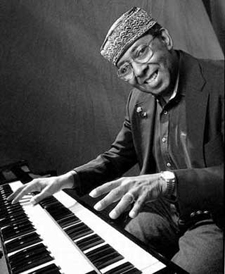 James Harrell McGriff was born on April 3, 1936, in Philadelphia, Pennsylvania, birthplace of many of jazz’s greatest organists. He started playing piano at the age of five and by his teens, was also playing alto sax and upright bass. His first group was a piano trio, which found him playing bass in the band. When he joined the U.S. Army, McGriff served as an MP in Korea and settled in on a career as police officer for Philadelphia’s finest, a gig which only lasted a little more than two years. James Harrell McGriff was born on April 3, 1936, in Philadelphia, Pennsylvania, birthplace of many of jazz’s greatest organists. He started playing piano at the age of five and by his teens, was also playing alto sax and upright bass. His first group was a piano trio, which found him playing bass in the band. When he joined the U.S. Army, McGriff served as an MP in Korea and settled in on a career as police officer for Philadelphia’s finest, a gig which only lasted a little more than two years.
Music kept drawing McGriff’s attention away from the police force. His childhood friend, organist Jimmy Smith, had begun earning a substantial reputation in jazz for his Blue Note records (the two played together once in 1967) and McGriff became interested in the organ sound while Richard “Groove” Holmes played at his sister’s wedding. Holmes went on to become McGriff’s teacher, friend and, on two occasions in 1973, his sparring partner for two Groove Merchant records.
In April 1960, McGriff made the switch and started playing organ. He was greatly influenced by the energy and dynamics of organist Milt Buckner and the diplomatic aplomb of Count Basie. But such local pianists as Sonny Gatewood, Howard Whaley and Austin Mitchell held his favor too. McGriff formed a combo that played around Philadelphia and often featured upcoming tenor sax player, Charles Earland, who soon switched permanently to organ when he saw how much fun McGriff was having at the organ. During this time, McGriff also accompanied such artists as Don Gardner, Arthur Prysock, Candido and Carmen McRae who came through town for local club dates.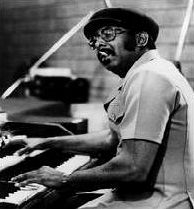
In 1961, McGriff’s trio was offered the chance to record an instrumental version of Ray Charles’s hit I’ve Got A Woman by Joe Lederman’s Jell Records, a small independent label. When the record received substantial local airplay, Juggy Murray’s Sue label picked it up and recorded a full album of McGriff’s trio, released in 1962. The album also turned out another huge hit, “All About My Girl,” firmly establishing McGriff’s credentials as a fiery blues-based organist, well-versed in gospel soul and fatback groove.
McGriff recorded a series of popular albums for the Sue label between 1962 and 1965, ending with what still stands as one of his finest examples of blues-based jazz, Blues For Mister Jimmy. When producer Sonny Lester started his Solid State record label in 1966, he recruited Jimmy McGriff to be his star attraction. Lester framed McGriff in many different groups, performing a wide variety of styles and giving the organist nearly unlimited opportunities to record. McGriff was heard everywhere; from an all-star tribute to Count Basie (The Big Band), a series of “Organ And Blues Band” records (of which, 1969’s A Thing To Come By, is the best), pop hits (Cherry, The Way You Look Tonight) and funk classics (Electric Funk and such singles as The Worm and Step 1).
During this time, McGriff actively performed at clubs and concert halls worldwide. He settled in Newark, New Jersey, and eventually opened his own supper club, the Golden Slipper – where he recorded BLACK PEARL and a live album with Junior Parker in 1971. Beginning in 1969, he also performed regularly with Buddy Rich’s band, though the two were only recorded once together in 1974.
McGriff “retired” from the music industry in 1972 to start a horse farm in Connecticut. But Sonny Lester’s new record company, Groove Merchant, kept issuing McGriff records at a rate of three or four a year. By 1973, McGriff was back – touring relentlessly and actively recording again. Around this time, disco was gaining a hold in jazz music and McGriff’s flexibility proved infallible.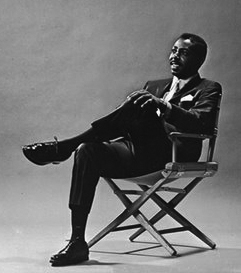
By 1980, McGriff broke away from Sonny Lester and began working actively with producer (and former funk lord) Bob Porter (and recording master Rudy Van Gelder). McGriff began a long relationship with Fantasy’s Milestone label, which has caught him in a wide variety of circumstances featuring such headliners as Rusty Bryant, Al Grey, Red Holloway, David “Fathead” Newman, Frank Wess and young gun Eric Alexander.
Between 1994 and 1998, McGriff also experimented with the Hammond XB-3, a sort of synthesized organ that increased the organ’s capabilities with MIDI enhancements. This gave McGriff an unnatural synthesized sound, which probably explains his retreat from the instrument on such recent efforts as 2000’s funky McGRIFF’S HOUSE PARTY (featuring fellow organist Lonnie Smith). He is a considerable player of many abilities and has managed over four decades to appeal to a diverse audience of listeners.
Posted in Artist of the Month | 11 Comments »
Sunday, May 31st, 2009

Is jazz going in a different direction?
Beginning June 7th, tune in to WNCU every Sunday evening at 6pm for one hour of jazz exploration. Looking at proven theories, new concepts, and what is going on in the minds of young innovators today is all part of the mix. Interviews with celebrity jazzheads and legendary musicians is also included.
Living With Music, airing for 6 consecutive Sunday evenings, is a radio show with a fresh approach about music, discovery, and links between who plays, who listens, and expanding borders of freedom of expression through jazz.
“We believe in progress, culture, and jazz. Living With Music is inspired by free exchange, improvisation, and the creative process.”
The Living With Music team includes:
Josh Jackson, Host and Producer
Paul Chuffo, Editor
Produced by WBGO
To find out more and participate at their interactive website, visit:
http://www.livingwithmusic.org/
Posted in Music News | 5 Comments »
Friday, May 1st, 2009
Machito was born February 16, 1912 in Tampa, Florida and died April 15, 1984 in London, England. He was the King of Afro-Cuban jazz. He grew up singing and playing with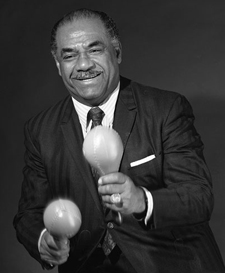 many of the leading musicians of Cuba. After playing with a few groups in Havana, he moved to New York City in 1937, following the lead of his friend (and later, brother-in-law), Mario Bauza. many of the leading musicians of Cuba. After playing with a few groups in Havana, he moved to New York City in 1937, following the lead of his friend (and later, brother-in-law), Mario Bauza.
In 1940, they decided to form a group and try out a style that combined Cuban rhythms and melodies and orchestrations derived from swing. Billed as the Afro-Cubans, the group was soon signed to Decca Records and had a few minor hits with numbers like “Sopa de Pichon [Pigeon Soup]” and Bauza’s composition, “Tanga” (which later became Machito’s theme song).
Machito’s sister, Graciela, came to the U.S. to sing with and lead the band with Bauza after Machito was drafted into the Army in 1942. Discharged due to an injury in 1943, he resumed performing and became a regular act featured in weekly radio broadcasts from the La Conga Club. Machito’s Latin rhythms began to influence many of New York’s jazz musicians, most notably Dizzy Gillespie, who had worked with Bauza in Cab Calloway’s band and was now pioneering a new style that would eventually be called, “bebop.”
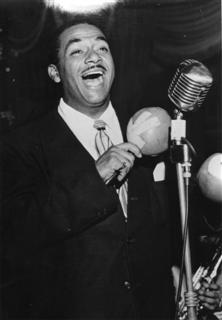 Another jazz artist influenced by Machito was Stan Kenton, whose new band was beginning to enjoy huge popularity. Kenton called Machito the “greatest exponent of Afro-Cuban jazz” and even recorded a Latin-flavored number titled, “Machito.” He and Machito shared the bill in a historic concert at Manhattan’s Town Hall on January 24, 1947. Another jazz artist influenced by Machito was Stan Kenton, whose new band was beginning to enjoy huge popularity. Kenton called Machito the “greatest exponent of Afro-Cuban jazz” and even recorded a Latin-flavored number titled, “Machito.” He and Machito shared the bill in a historic concert at Manhattan’s Town Hall on January 24, 1947.
Producer Norman Granz then got the idea of pairing the great bebop alto saxophonist Charlie Parker and tenor Flip Phillips with Machito in for a series of recordings in December 1948 that have since been cited for establishing “the Latin-jazz connection for all time.” With compositions and arrangements by Bauza and Chico O’Farrill, Machito’s recordings from this period (reissued on Mucho Macho) are considered his band’s finest work.
Machito continued to perform both in the U.S. and abroad until his death. One of his last recordings, “Machito and His Salsa Big Band,” won the Grammy for best Latin album in 1982 and Machito was waiting to go on stage at Ronny Scott’s nightclub in London when he suffered a fatal heart attack in 1984.
Posted in Artist of the Month | 6 Comments »
Friday, April 17th, 2009
 You can now stream WNCU via your iPhone! You can now stream WNCU via your iPhone!
Here’s how you can get the Public Radio Tuner app.
From your iPhone or iPod Touch:
1. From your iPhone or iPod Touch, click the App Store icon.
2. From the App Store, click the Search feature.
3. Type “public radio” and click Search. Public Radio Tuner will appear in the search results.
4. Click Public Radio Tuner. A description of the Public Radio Tuner application displays.
5. Click the Free button. It changes to an Install button.
6. Click the Install button.
7. Wait for the Public Radio Tuner application to be installed.
8. Click the Public Radio Tuner icon from the iPhone or iPod Touch Home screen and listen!
Posted in Music News | 3 Comments »
Wednesday, April 15th, 2009
To learn more about Julliard’s Summer Jazz Residency in Altanta and Jazz Workshop at Snow College, click here.
Posted in Music News | 7 Comments »
|
 Mark Whitfield was born in October 1966 in Long Island, New York. The youngest of five, his love for jazz and blues music came early. At the age of 15, all his siblings were moving into careers as doctors and lawyers and Whitfield himself, had obtained a medical student internship at Georgetown University. While that’s impressive for any 15-year-old, it was the scholarship he won to the Berklee College of Music, in Boston, which excited him even more. After his family moved across the country to a suburb of Seattle, Whitfield convinced his parents to let him attend Berklee after graduating from high school early, at the age of 16. It was while studying the guitar at Berklee where Whitfield met a young piano and vocal student from Baton Rouge, Louisiana, named Jody Davis.
Mark Whitfield was born in October 1966 in Long Island, New York. The youngest of five, his love for jazz and blues music came early. At the age of 15, all his siblings were moving into careers as doctors and lawyers and Whitfield himself, had obtained a medical student internship at Georgetown University. While that’s impressive for any 15-year-old, it was the scholarship he won to the Berklee College of Music, in Boston, which excited him even more. After his family moved across the country to a suburb of Seattle, Whitfield convinced his parents to let him attend Berklee after graduating from high school early, at the age of 16. It was while studying the guitar at Berklee where Whitfield met a young piano and vocal student from Baton Rouge, Louisiana, named Jody Davis. Later that same year, he was playing at the club’s 25th anniversary party when legendary jazz guitarist George Benson heard him. Benson was impressed and arranged for him to work with celebrated organist Jack McDuff. McDuff was not especially enamored of Berklee graduates but let him play with his band. It was a learning experience for Whitfield who incorrectly assumed he had a sophisticated theoretical and harmonic background. McDuff soon set him straight, “Stop playing those banjo chords,” he told Whitfield.
Later that same year, he was playing at the club’s 25th anniversary party when legendary jazz guitarist George Benson heard him. Benson was impressed and arranged for him to work with celebrated organist Jack McDuff. McDuff was not especially enamored of Berklee graduates but let him play with his band. It was a learning experience for Whitfield who incorrectly assumed he had a sophisticated theoretical and harmonic background. McDuff soon set him straight, “Stop playing those banjo chords,” he told Whitfield. Whitfield’s second album, Patrice, was released in 1991. More avant garde than his previous album, it again did well with the critics but not in sales. In 1993, while working on his third album he had been persuaded to try a more salable approach and the smooth jazz of his Kenny G-style work produced a modest success. Whitfield toured with a large band for a few months but found he disliked playing pop songs. He returned to playing more traditional jazz with a trio and in turn confounded the audiences, who were expecting his pop material. “The alternative is, you sell out your musical and artistic vision,” he told Keith Spera of Offbeat. “If it’s not a huge commercial success, then you’re a complete failure–you have no recourse. You weren’t successful as a jazz musician, you weren’t successful as a pop musician. What do you do now?”
Whitfield’s second album, Patrice, was released in 1991. More avant garde than his previous album, it again did well with the critics but not in sales. In 1993, while working on his third album he had been persuaded to try a more salable approach and the smooth jazz of his Kenny G-style work produced a modest success. Whitfield toured with a large band for a few months but found he disliked playing pop songs. He returned to playing more traditional jazz with a trio and in turn confounded the audiences, who were expecting his pop material. “The alternative is, you sell out your musical and artistic vision,” he told Keith Spera of Offbeat. “If it’s not a huge commercial success, then you’re a complete failure–you have no recourse. You weren’t successful as a jazz musician, you weren’t successful as a pop musician. What do you do now?”

 WNCU will air Piano Jazz weekly beginning Sunday, July 12th at 6pm.
WNCU will air Piano Jazz weekly beginning Sunday, July 12th at 6pm. November 11, 1923 – June 16, 2009
November 11, 1923 – June 16, 2009 James Harrell McGriff was born on April 3, 1936, in Philadelphia, Pennsylvania, birthplace of many of jazz’s greatest organists. He started playing piano at the age of five and by his teens, was also playing alto sax and upright bass. His first group was a piano trio, which found him playing bass in the band. When he joined the U.S. Army, McGriff served as an MP in Korea and settled in on a career as police officer for Philadelphia’s finest, a gig which only lasted a little more than two years.
James Harrell McGriff was born on April 3, 1936, in Philadelphia, Pennsylvania, birthplace of many of jazz’s greatest organists. He started playing piano at the age of five and by his teens, was also playing alto sax and upright bass. His first group was a piano trio, which found him playing bass in the band. When he joined the U.S. Army, McGriff served as an MP in Korea and settled in on a career as police officer for Philadelphia’s finest, a gig which only lasted a little more than two years.


 many of the leading musicians of Cuba. After playing with a few groups in Havana, he moved to New York City in 1937, following the lead of his friend (and later, brother-in-law), Mario Bauza.
many of the leading musicians of Cuba. After playing with a few groups in Havana, he moved to New York City in 1937, following the lead of his friend (and later, brother-in-law), Mario Bauza. Another jazz artist influenced by Machito was Stan Kenton, whose new band was beginning to enjoy huge popularity. Kenton called Machito the “greatest exponent of Afro-Cuban jazz” and even recorded a Latin-flavored number titled, “Machito.” He and Machito shared the bill in a historic concert at Manhattan’s Town Hall on January 24, 1947.
Another jazz artist influenced by Machito was Stan Kenton, whose new band was beginning to enjoy huge popularity. Kenton called Machito the “greatest exponent of Afro-Cuban jazz” and even recorded a Latin-flavored number titled, “Machito.” He and Machito shared the bill in a historic concert at Manhattan’s Town Hall on January 24, 1947. You can now stream WNCU via your iPhone!
You can now stream WNCU via your iPhone!